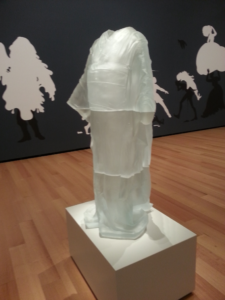HRV and Acupuncture: Sino-Austrian Study Planned
Kristen Sparrow • July 09, 2017


What I love best about this paper is the title i.e “prevention of lifestyle disease.” Yes! That is a key aspect of acupuncture treatment, true prevention. This study is planned, not yet completed. They will be comparing Heart Rate Variability (measure of stress levels via autonomic balance) and Heart rate and symptomatology comparing different acupuncture points. This is a controlled method that mimics what I do in the clinic. I measure heart rate variability over seconds to minutes during treatment and then over time. I am keenly interested in the results of this study!
High-tech acupuncture for prevention of lifestyle diseases-A Sino-Austrian cooperation research protocol on heart rate variability.
Abstract
BACKGROUND:
Acupuncture can not only be used for well-known diseases, but also for so-called modern lifestyle-related diseases. Using innovative methods like e.g. new analyses of heart rate variability (HRV), it is also possible to investigate diseases like burnout syndrome, ie., qi defificiency in Chinese medicine (CM).
OBJECTIVE:
The main object of this research protocol is to perform research on the relationship of burnout syndrome and heart rate (HR) and HRV.
METHODS:
A total of 175 patients with burnout syndrome (qi defificiency syndrome) in fifive groups and 35 healthy volunteers will be investigated. Based on random numbers generated by computer and concealed in opaque envelops, the patients will be assigned to four acupuncture groups using Zusanli (ST 36) acupuncture stimulation, Guanyuan (CV4) acupuncture stimulation, both points, and both points with Streitberger device respectively, and a moxibustion group using both points mentioned above, with 35 cases in each group. Altogether four different experiments are planned. Experiment 1 includes 70 subjects and is a comparison between a burnout group and a control group (healthy volunteers). The evaluation parameters are different scores and indices of HR and HRV. Experiment 2 includes 140 subjects and compares the effificacy of different acupuncture points. In experiment 3 (105 subjects), acupuncture and moxibustion should be compared to healthy volunteers. Experiment 4 (70 subjects) investigates the long-term therapeutic effects of acupuncture and moxibustion on the scores of qi defificiency and HR/HRV in qi defificiency patients. In both the acupuncture and moxibustion groups, a total of 10 treatments will be performed.
CONCLUSIONS:
The joint research aims at the scientifific evaluation of CM, mainly in the fifield of HRV. This parameter could be a very good indicator of the state of health and can be inflfluenced by different acupuncture methods, as shown in the past.

